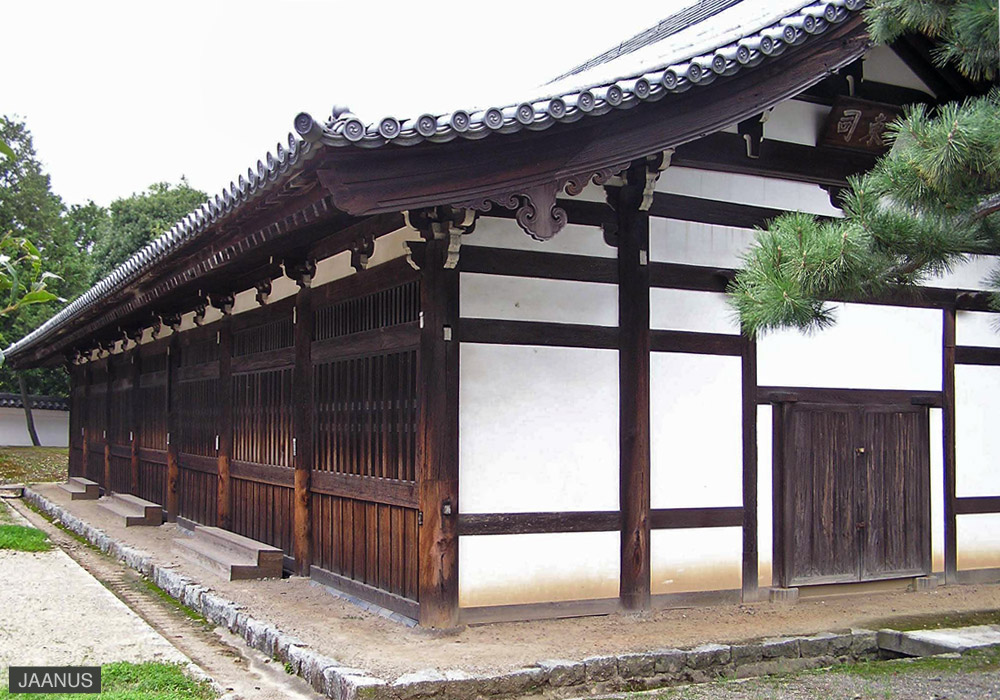|
||
 |
||
The lavatories were situated diagonally to the left and right of the bathhouse *ooyuya å®. The tousu was at the east right front of the grounds facing the main gate, while the saijou was at the west, left front of the grounds also facing the gate. The priests of highest status used the tousu and lower level administrators used the saijou. Eventually, tradition has it, the separate latrines were combined into one and called Tousu. Only two are extant at Zen temples. These are:
Toufukuji Tousu (early 15c) in Kyoto. It is 7~4 bays (27.07m~10.36m) and has a gable roof *kirizuma-zukuri ØÈ¢, covered with tile *hongawarabuki {¢. Its only entrance is on the north gable end. The interior is now lacking all its original fixtures. The other tousu is at the Zen temple called Shuuon-an V¶Á (1653) in Kyoto. It is 2~2 bays (4m~3m), and also has a gable roof that is covered with pantile *sangawarabuki V¢. At Rinnouji Taiyuuin Ö¤åQ@, there is a toilet called Reibyou Saijou ì_¼ò (1653) in Tochigi prefecture. It is 5~2 bays (9.10m~3.64m), and has a gable roof. It has an entrance on the gable end. The roof is copper-covered to simulate tile, doubanbuki ºÂ.

Toufukuji
Tousu i (Kyoto)
@
(C)2001 Japanese Architecture and Art Net Users System.@No reproduction or republication without written permission.
fÚÌeLXgEÊ^ECXgÈÇASÄÌRec̳f¡»E]ÚðֶܷB

